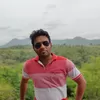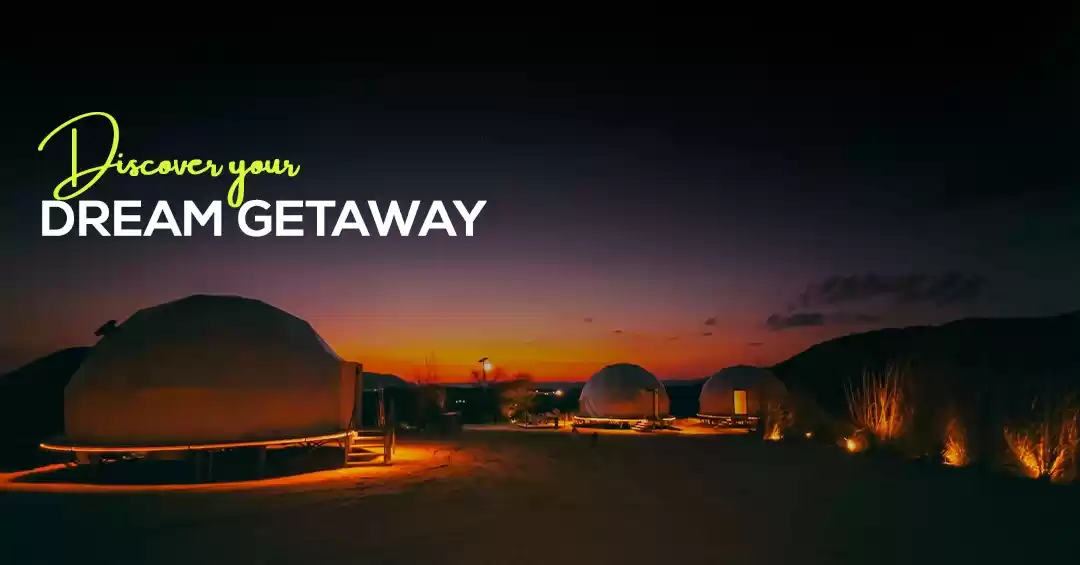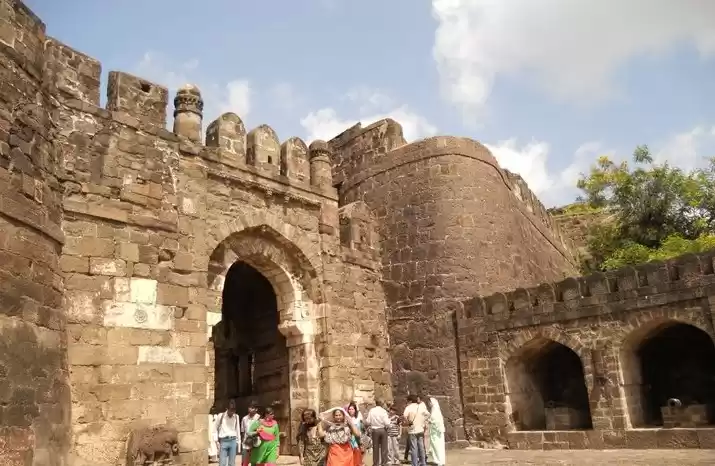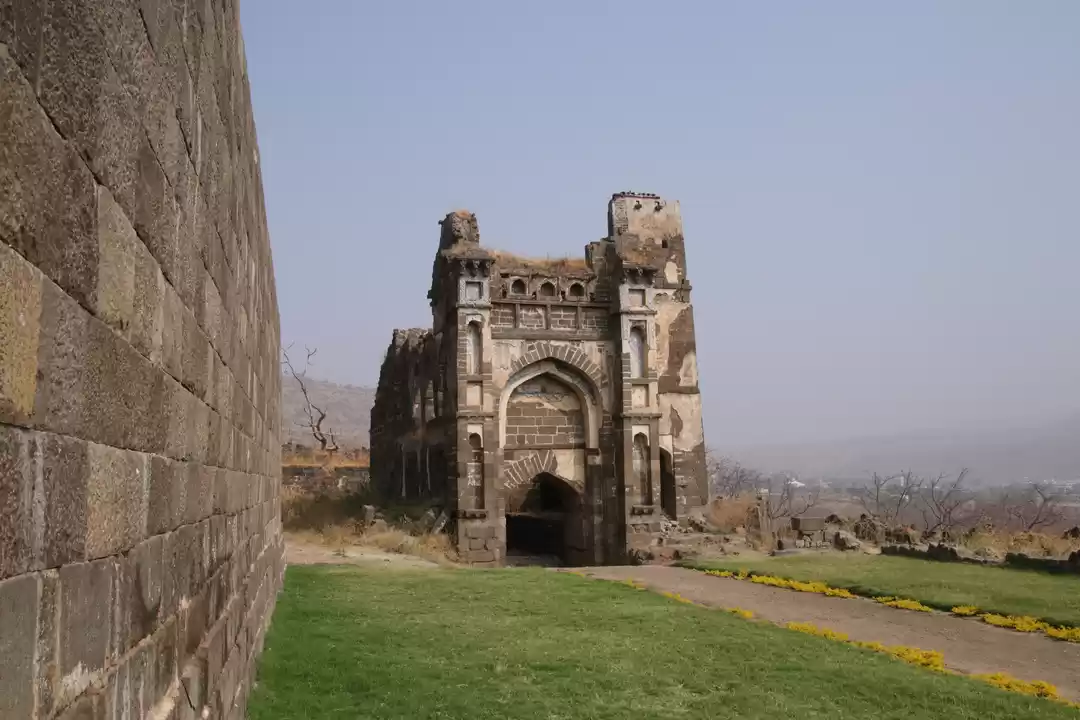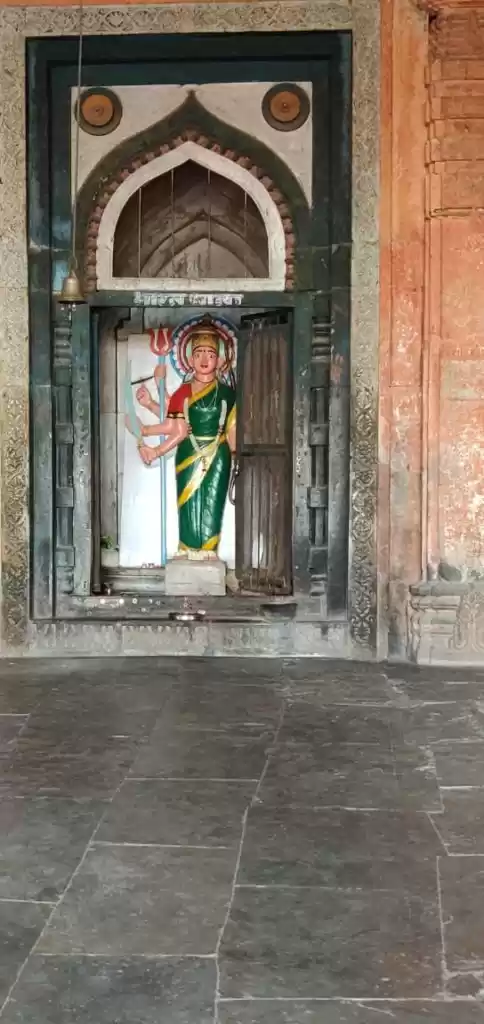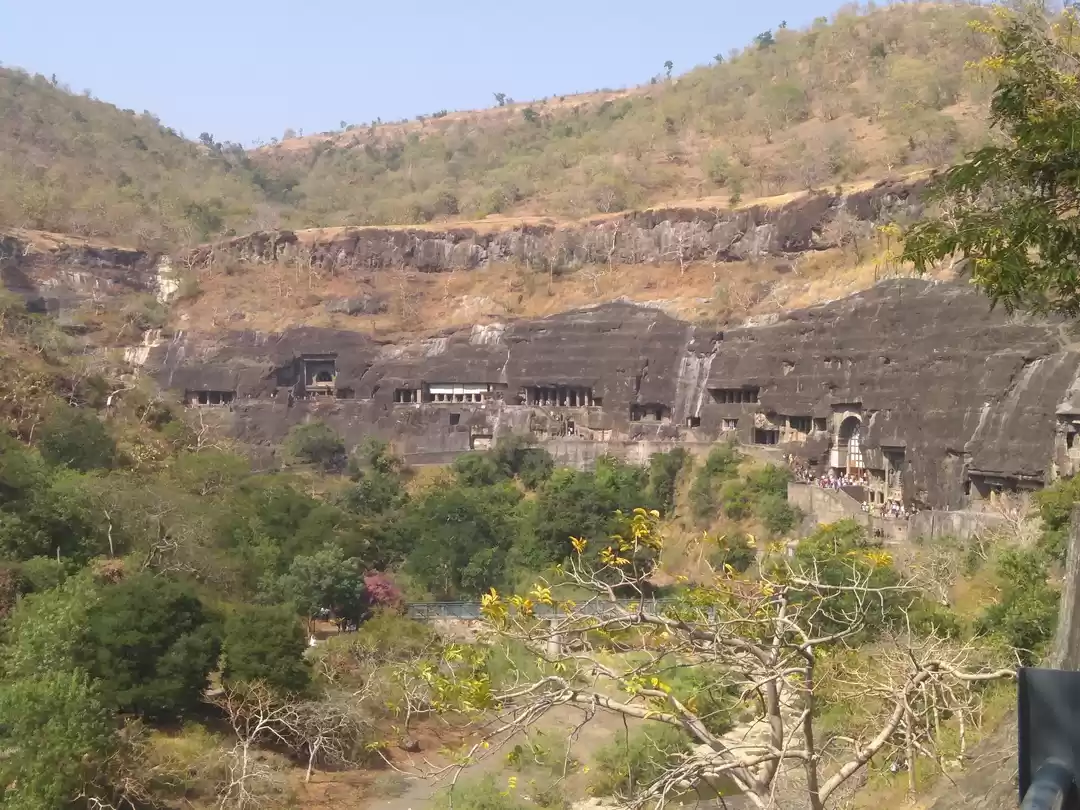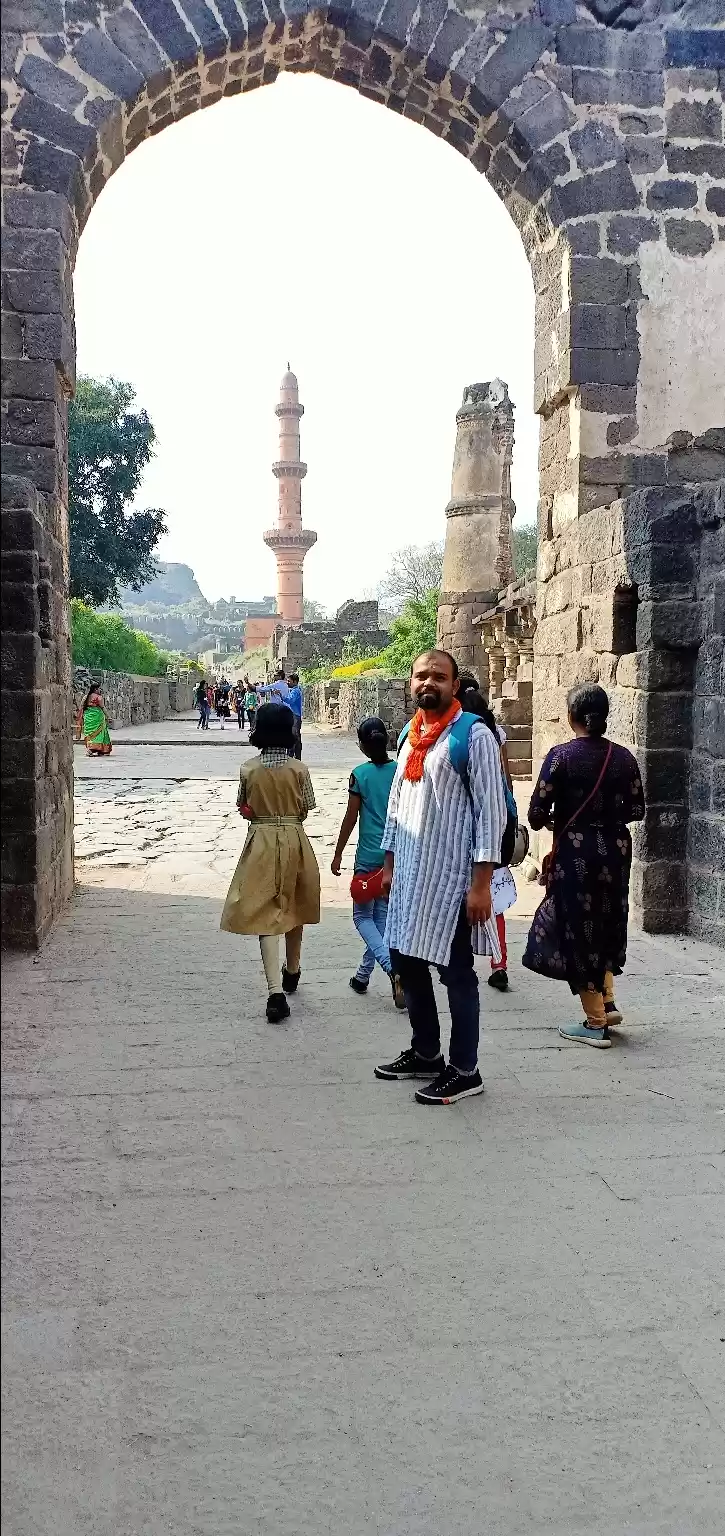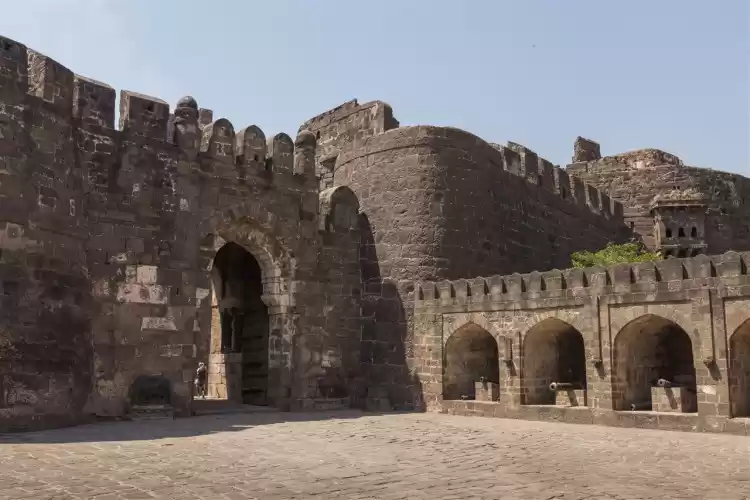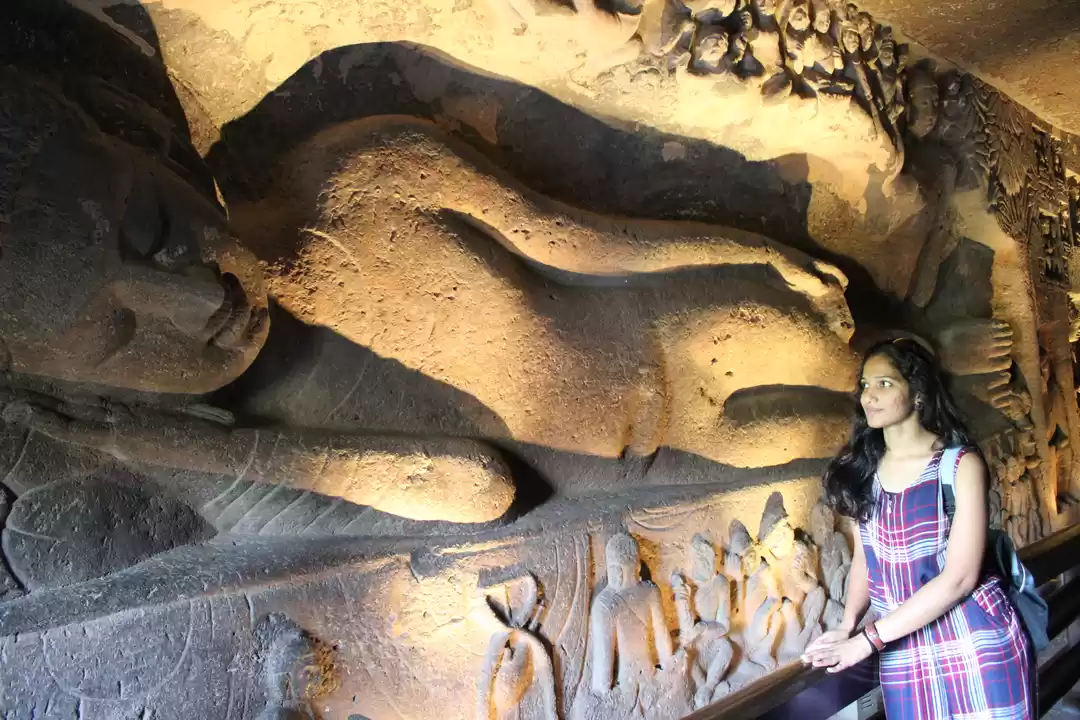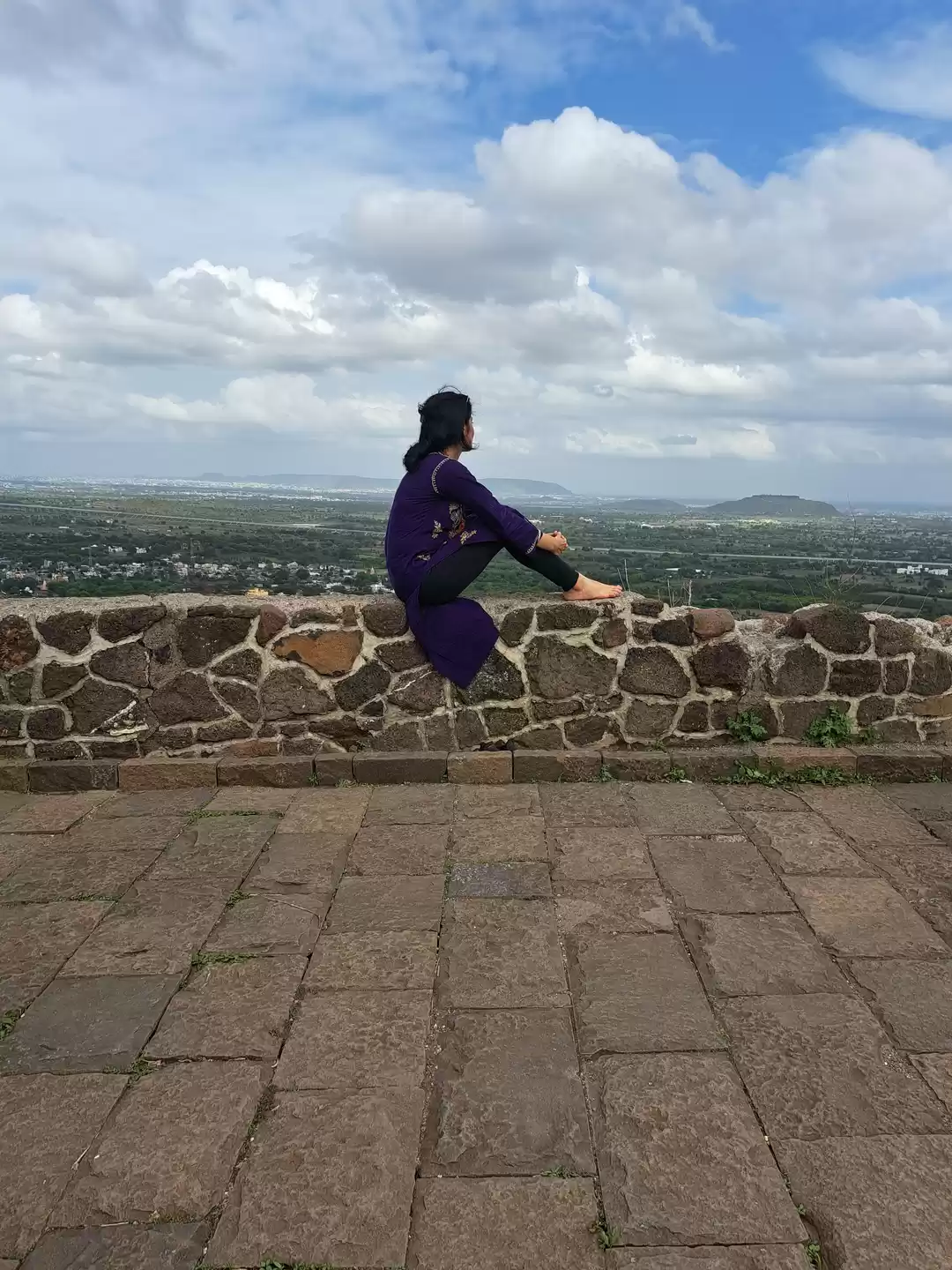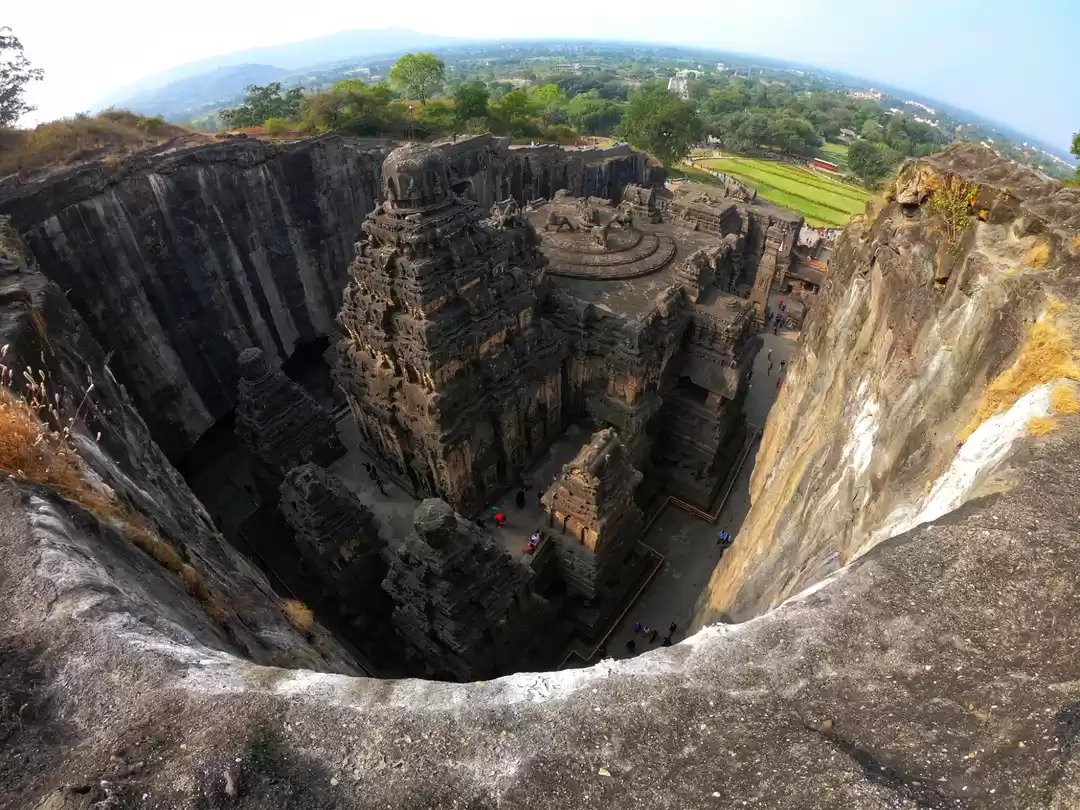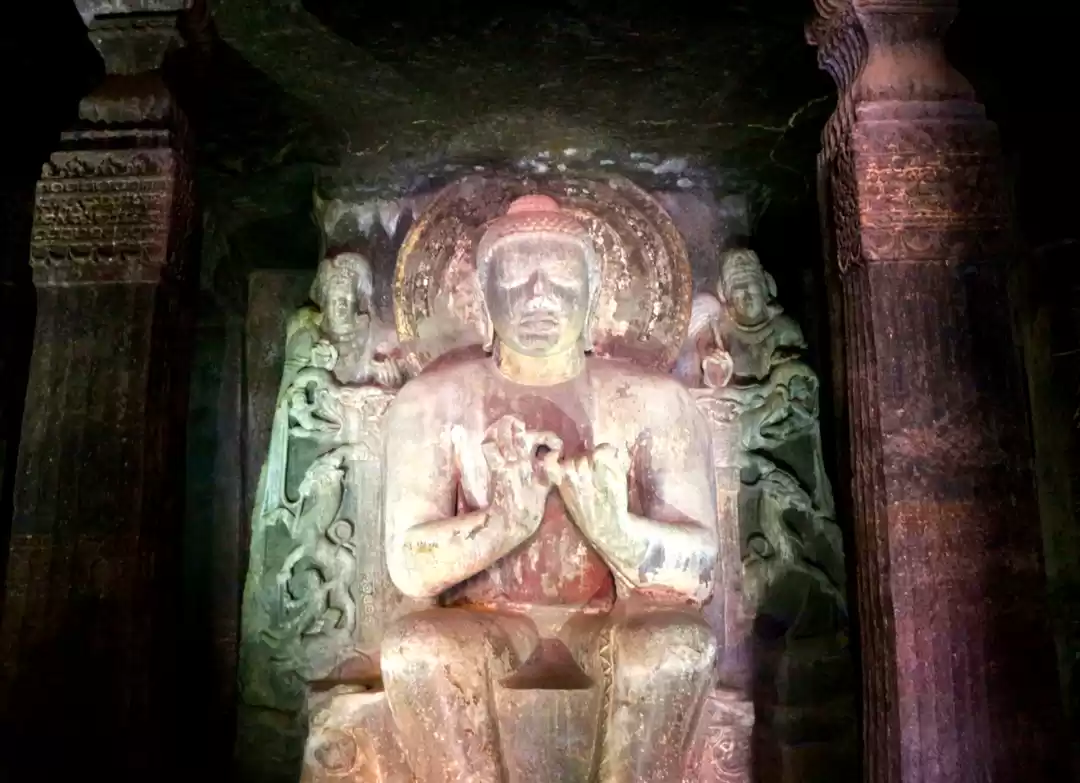
Last December, a sudden plan to visit somewhere during the March long weekend struck us. The hills and sea shores are always part of holiday planners. However, when you have three days of time to utilize the travel bug, it better become a good retreat. Himalayas require a bit stretched timeline when you reside in Southern India and three days will be injustice and grumpy face to your mind. Therefore, it was decided to visit somewhere different falling between the choice of Sea shore and altitude.
There we were. After a brief discussion with my brother and sister along with their three friends Anirban, Chandroma and Saheli, we ventured for the trip. The caves of Ajanta and Ellora.
It was well known, the trip wouldn’t be a relax by the cot kind of with chilled drink to quench your thirst and admiring the sun going beyond the axis towards the left. Rather, it’s kind of walk, jog, perspire, dust and summer shots on your face.
Game on for Ajanta and Ellora caves in Maharashtra for a 3 day trip. Itinerary was set and planned. On a Wednesday evening amidst the standby traffic where office goers were returning home, we were happy to sign off the laptop and head towards the KIA Airport. It poured immense pleasure to think and remind you, the next day would be wondrous and wouldn’t be the round the clock daily chores. With all such merry shots in mind, we set for the airport.
We were to fly at 10.55 PM for Pune. To avoid any kind of dog chase run at the airport, we left a bit early to settle before the onboarding comfortably. It took us an hour and ten to reach. We had put up for the night at Chandroma’s cousins – with the plan to set off the next morning. A car was booked from the rental services ‘Zoomcar’ which runs a formidable business of helping travelers rent self-driven cars at one’s wave of hand. Prayag and Anirban were the Captains for the road trip. Can’t thank them enough for the leg days they went through by starting off to get the car at the wee hours of the Friday morning. We woke up by 7 AM, packed the belongings back and started off by 9.30 AM. We were headed towards Aurangabad which is 235 kms from Pune. Starting off with few hiccups here and there within the city, we managed to touch the state highway. It was humid to the core and heat just starting paddling upwards. Being humans and fluffed to the Bangalore weather, little irks were inevitable. On top of that, traffic was the last thing we happy goers wanted to embrace as we started off with the journey. Digesting the reality, with quite a few cuts, shorts and stops we managed to enter the Beed-Ahmednagar highway. The entire stretch to Daulatabad was surrounded with barren lands, Rocky hilltops and distant sky where the blues turned grey. The view during the drive was not a smile for the eye, however boasted of the roughness the state has and the strength it might have always had. Remember, these areas were abode to some of the great warriors of India. These thoughts contemplated me and amidst couple of pull overs for breakfast and lunch we reached the Daulatabad Fort at 3.20 PM.
Daulatabad Fort
Also known as Devagiri, Daulatabad Fort was built by Bhillama V – King of Yadava’s in 1187. It was also ruled by Alauddin Khilji at the dawn of the 1200s. Under Md, Bin Tughlaq it was the capital of the Tughlaq dynasty. However, the capital was moved to Delhi due to water scarcity and drought eventually.
My first thought of Daulatabad Fort was, “Where is the Fort?” Indeed the surrounding was questionable. However, minutes later, the beauty of a dilapidated structure struck me when focusing straight to the distance, I saw a pyramid with a blunt conical hilltop thousands of hands away. Felt good, saw something and not disappointed. The interest grew more upon entering the premises. While stepping towards the entrance, we had to dodge few workers busy replicating wall stones which were built thousands of year back.
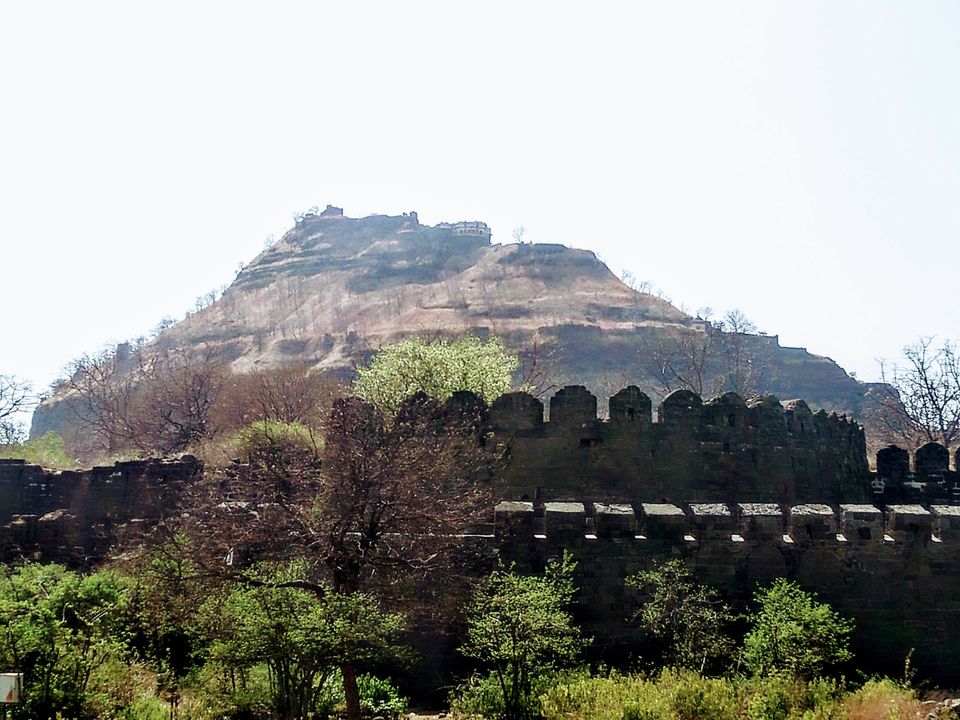
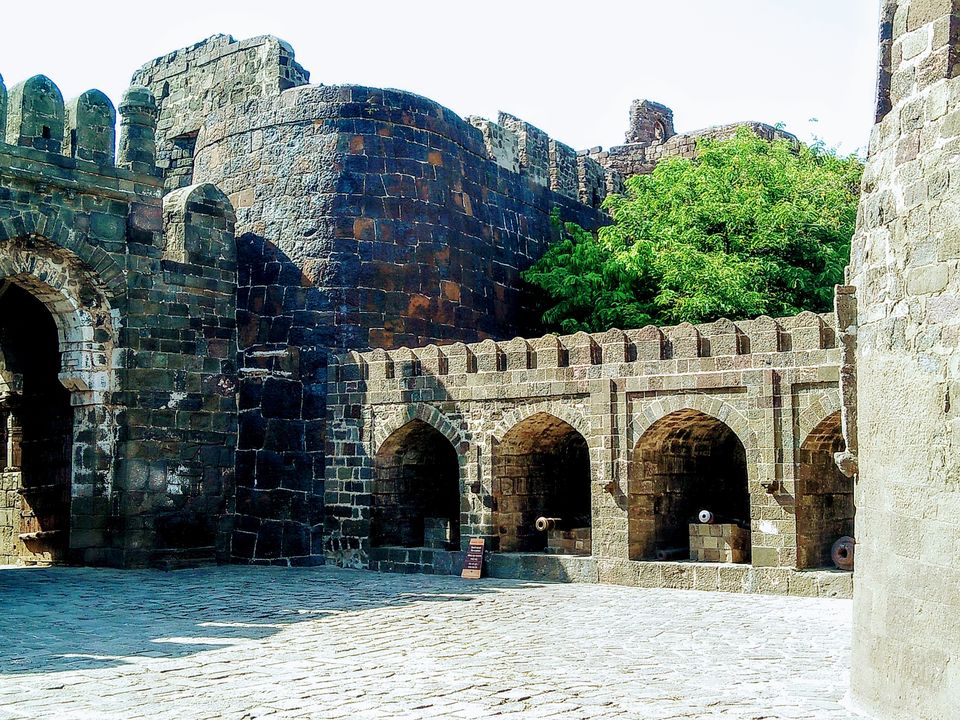
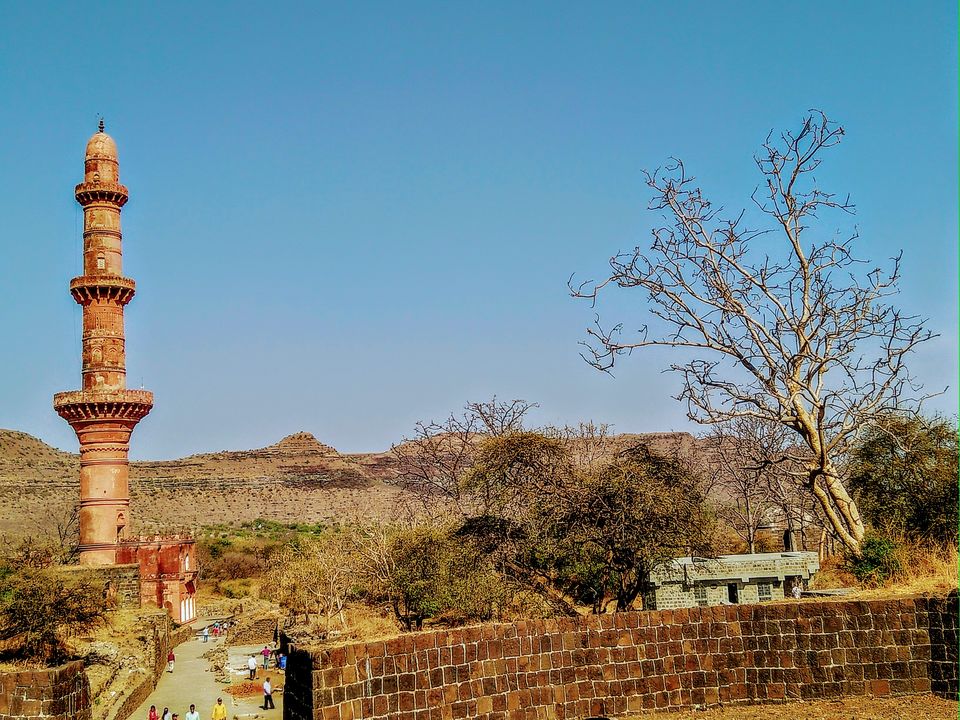
The beginning of exploration did not go well as we got into a hoax of guide charges. There are guides who are authorized and from “Incredible India!” who called out a charge of 1600 bucks and that was moonstruck for us. We called it off after negotiations did not fit our bill and decided to admire the history with the help of the support books. Few other folks approached us to show us the place at half of the previous charges. We agreed to that, but got fiddled by the govt. guides who stated the blokes to whom we agreed were fraud and might educate us with distorted history. Avoiding any clashes while in search of a peaceful tour, we avoided both and went ahead on our own. Upon turning back to find out what they were up to, we found them exchanging fist blows taking history and the fort seriously. Post stepping in, we came across the gigantic wall structures all over and amidst that were placed cannons made during the period of humdrums that occupied the current silent fort yards. It was of vast expense with calculated hammering all over. The fort is a calculated multiplication of ideas, monuments, and creativity. Daulatabad fort is an example of chivalrous intelligence added with engineering. When the place is green, it is beautiful from outside as they say. However, when you are actually inside and go through the details and study it, one would realize it is not a signature of art or a stamp of artistry of the dynasties during those period, but absolute example of defense, security and trap.
The entire fort is enclosed within a 4 kms circumference and inside it lay the epic monumental structures. Once you enter the fort post crossing the gigantic walls, one lands before a straight street stretched for couple of kms before it ascends up towards the fort. Between the fort and the outer boundaries lay three line of defenses to make it cumbersome for the enemies to skirmish.
The entire fort is stretched and spread with magnificent structures of equal importance. However, to one’s first sight the prominent one is the Chand Minar. The Minar also known as The Tower of Moon was built by Ala-ud-din Bahmani of the Bahmani Sultanate in 1445 to observe the capture of the fort. I thought at first it looks like the Qutb Minar of Delhi. However, upon further reading through the guide books, understood it was actually an inspiration to erect the structure. The Minar is built into 4 storeys with the diameter increasing if counted from the top little dome. The highlight of the entire Minar is the use of “Lapis Lazuli” which is a deep blue rock known to have been imported from Persia in those days. However the color with time changed and its presence is available in bits and pieces.
You need to have a good heart to walk under the scorching sun. I come from the land of summer and heat, but the burn senses Daulatabad gave cannot be rendered.
Post admiring the Lapiz Lazuli, we ventured inside the fort structure with stairs bending your knee at right angles. Must say, walking down the aisle from the entrance to the first stairs of the fort is indeed tiring. One must carry water, umbrella, caps if don’t want to irk with tiredness. A few right turns and left turns, we came across the Chini Mahal. It was a VIP prison now in ruins which once had been a compelled residence of Abul Hasan Tana Shah and Sambhaji Maharaj (Son of Shivaji Maharaj). Tana Shah was imprisoned here by Aurangzeb where he stayed in captivity for 12 years until his death. Historically, with the death of Abul Hasan Qutb Shah, the Qutb Shahi dynasty ended.
One of the featuring aspect of the view from the first elevation of the fort is the dull, sluggish and barren presence everywhere. I had seen few photos on the internet before our journey where the place used to be thick green everywhere. It would have been warm to our eyes, If could have experienced that during our tour.
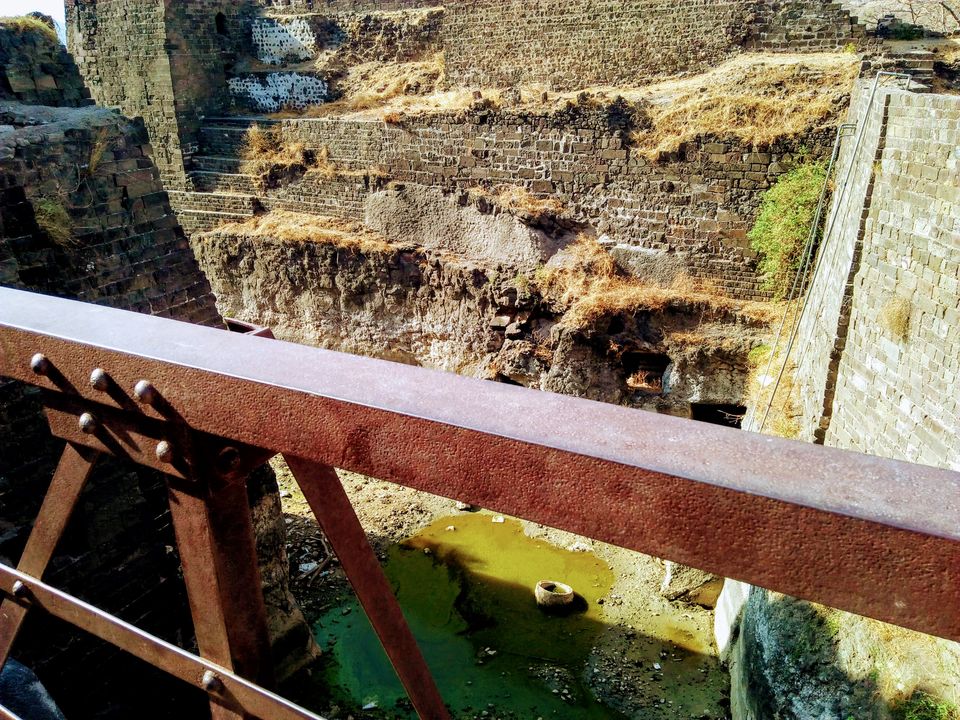
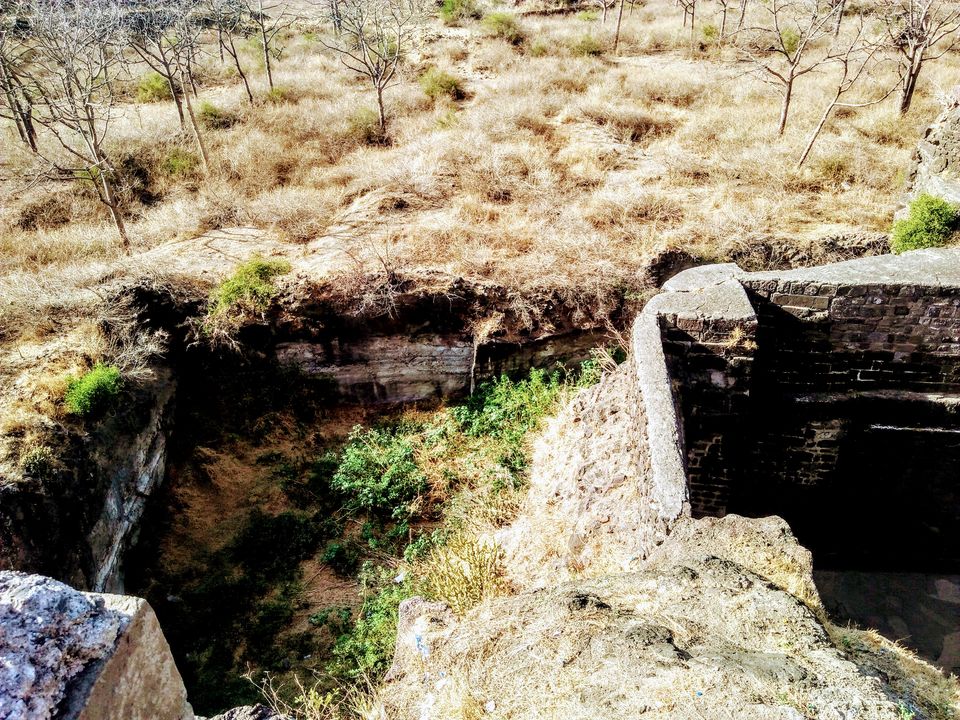
Marching ahead, there is a narrow foot bridge to step into the other part of the fort. A moat 20-30 fit deep beneath the bridges was used as a defense mechanism. Even if one looks down, it would shiver about the history it carries. When the place was active for concur and battles, the moat used to be the final drop for the enemies or even another defense tactic. One cannot climb the walls due to this. Crocodiles used to enjoy their time in the moat water amidst chaos on the land until human enemy became their food. As I had already mentioned, the fort is an example of innovative build for defense.
One of the finest point is a cave pitched dark without a point of light and housed by hundreds of bats. If the foes would even approach, it would pierce into a dark environment without any naysay of what expects them. The approaching gate was cleverly made. Even if thousands would dance to attack, it cannot enter in thousands. That would help the defenders take care of the attackers in an agile methodology.
We climbed up the stairs instead of venturing into the bat-cave except Prayag. If climbing stairs looks normal, it isn’t. The entire path had stairways and staircases. The size of each one of them were planned for elephants, cavalries to march, not for tourist attraction. Here, falling prey to their planning and construction, we are the ones to trek hard hundreds years later.
It took us another hour to reach halfway of the fort. For the first time, I might have wished a path to end as it was getting beyond our level of comfort. Few of them from our gang decided to rest while me, Prayag and Anirban resurrected our energies back. Prayag was the spontaneous one amongst the three of us went. My biggest error of judgment I realized was wearing a jeans while walking all the way. Before leaving for Aurangabad, I thought we would first check-in at the hotel. Anyway, if I am half way there, it was time to reload and complete the rest of the steps. Midway, we rested a bit. Though, the view down was not gratifying, yet the cool breeze hitting me was a gulp of water quenching thirst. Resting for 5-10 minutes would give your spines the required balance of act. Again, we started to walk the rest of the path. After almost twenty minutes of small rickety steps panting and puffing, I managed to reach the top of the summit which I first looked at after getting down from the car. Upon perking the place, I looked for the car we had parked which now seemed a small toy. It was a good feel to see it back from the place which we targeted first. Truly climbing high is not easy and once reaching it, looking the journey down is a sigh of relief. Be it during trek or life.
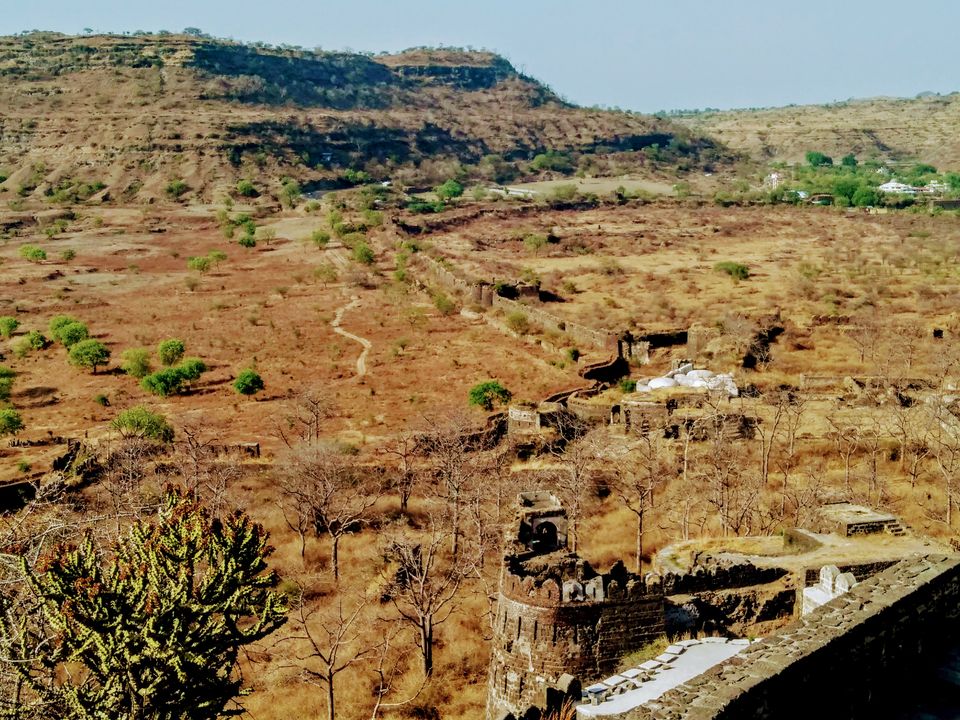
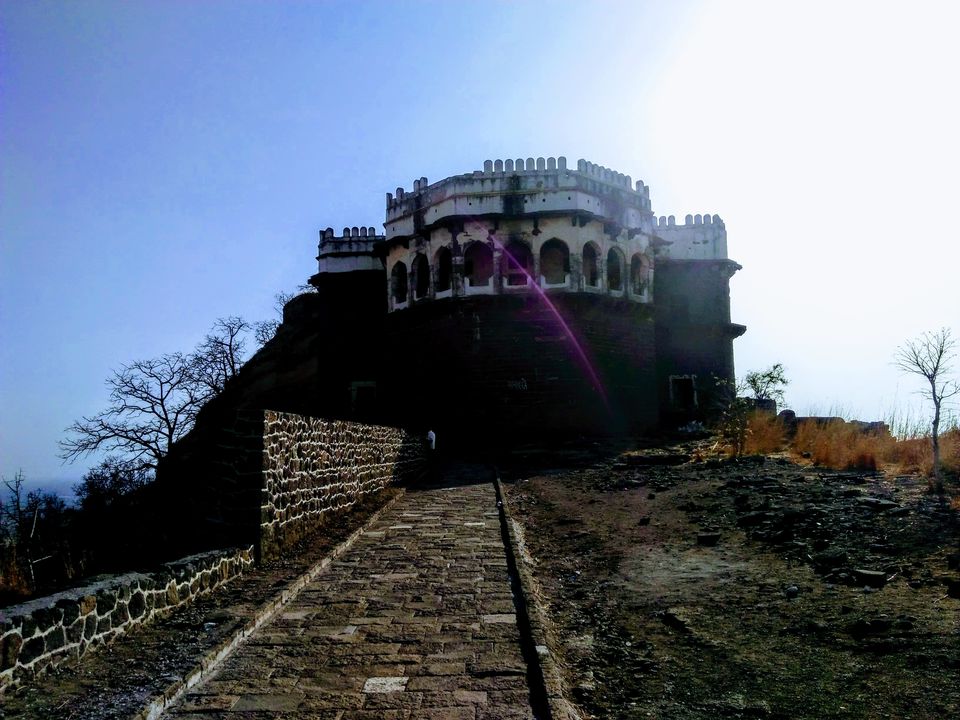
The place was filled with groups in form of friends, families and couples. It was a small experience against many available treks, but walking 750+ giant flat stairs is no easy uphill task. The peak used to chamber the place where the emperors, rulers, commanders would observe the happenings in and around. It used to be an observatory for approaching enemies and thereby plan the next course of action. While the sun was about to go further down and darken to black from orange, we met an aunty who was offering prayers at a small temple just behind the fort. She offered us a glass of water and shared few points of importance of the place and Daulatabad. Returning back was the easiest one as we are approaching in favor of gravity and with an added point of accomplishment reaching the top.
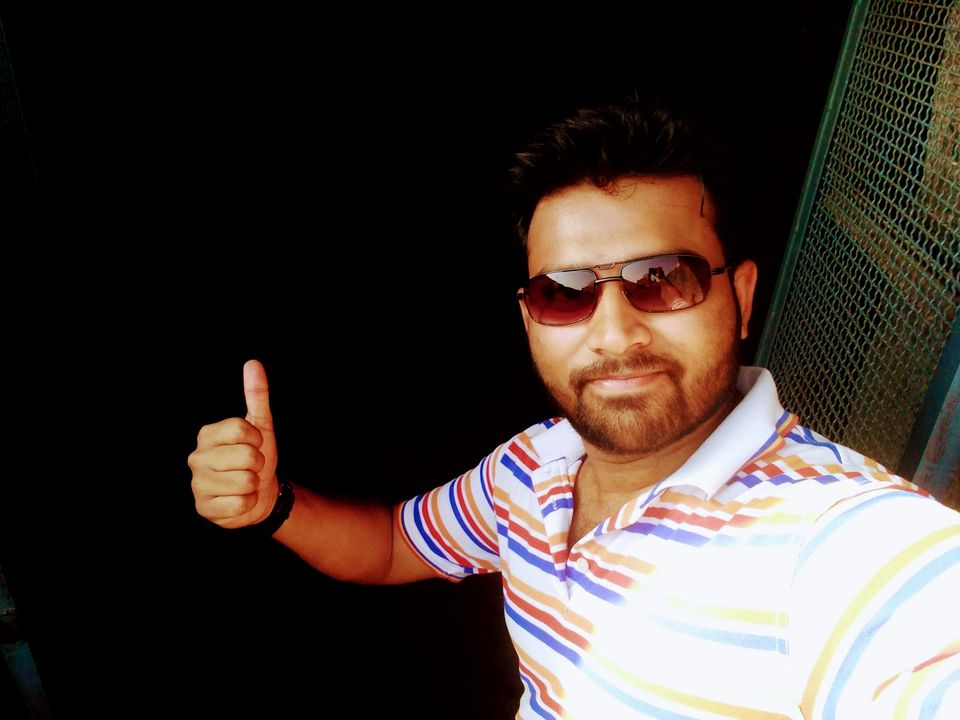
Before moving out, my sister, I and Prayag visited the “Bharat Mata temple”. It is stretched over a large part with a high risen boundary all over in a rectangular fashion. It implemented the touch of a Jama Masjid. The temple is made up of mixed cultural presence. While the ancient pillars are of Hindu style, the sanctum was Islamic.

We were done for the day. It was 7 PM by the team we left the fort. Had few snacks after unplanned cardio and went back to hotel post a quick visit to Grishneshwar Jyotirlinga temple.
Our next destination was the main reason for the visit. The caves of Ajanta and Ellora.
read the story at my blog @ https://ankanzpage.wordpress.com/

